If there’s one thing an angler needs for a productive day on the water, it’s a good fishing rod. But just like you wouldn’t take an SUV to NASCAR, you can’t cast an old Bass rod and expect to land a Marlin. With countless types of fishing poles on offer, the question is, how to choose a fishing rod that’s right for you? Well, that’s exactly what you’re going to learn today.
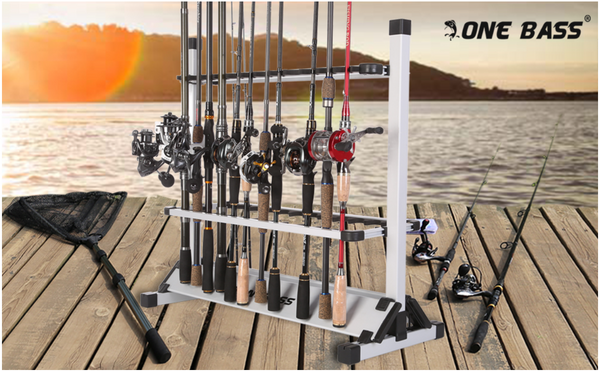
Choosing a fishing rod can feel overwhelming, especially if you’re doing it for the first time. From length and materials, to action and power, the list of things to consider can make your head spin. With that in mind, we’ve summed up the most important things you should know, as well as the pros and cons of various types of fishing poles out there.
By the time you’ve read this guide, you’ll be ready to find a rod with your name on it. Let’s dive in!
What’s the right fishing rod length?
Length is one of the first things you’ll need to look at when choosing a new rod. From stout close-quarter fishing rods to long casting poles, rods range anywhere from 4–14 feet! These extremes come with a few trade-offs, so it’s important to match your rod with the type of fishing you’re getting into. Here’s why.

Rod length has a big impact on how far you can cast. Longer rods typically make for longer casts, but they’re a lot harder to maneuver. On the other hand, shorter rods give you a lot more control, but you’re pretty limited with how far you can throw the line.
Let’s say you’re fishing underwater structure from a kayak. In this situation, you don’t really need to cast that far. What you do need is a rod that’s easy to handle. This is where a 5–7′ rod really shines. Shorter rods are also more powerful, so if you’re gunning for large fish, this is the way to go.
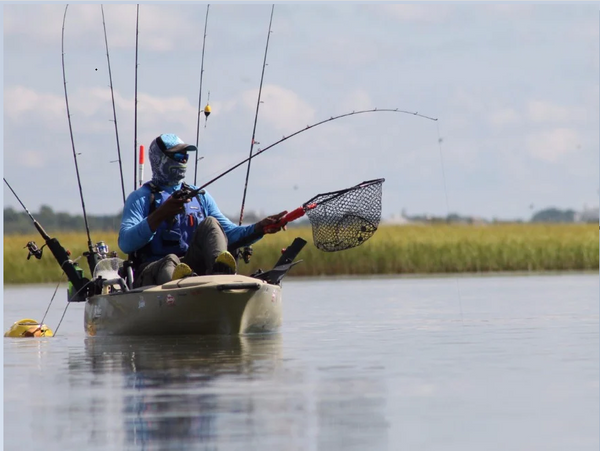
On the other hand, if you’re wading or throwing topwater walking lures, a longer 8+ foot rod can be a life-saver. Swinging these rods can seem like a chore, but you’ll be able to make some seriously long casts.
For beginners, most anglers will agree that a 7′ fishing pole is a good all-round choice.
Which rod material should I choose?
Fishing rods are made out of fiberglass, graphite or composite (a mixture of the two). Rod materials have a huge impact on performance, so knowing which one to choose will have a massive effect on your fishing success. Let’s take a look at the pros and cons of each type.
Fiberglass Rods
The old reliable of the angling world, fiberglass fishing rods have been around for ages. Strong and enduring, these rods can really take a beating. They’re also easy to make, which makes them relatively affordable, too.
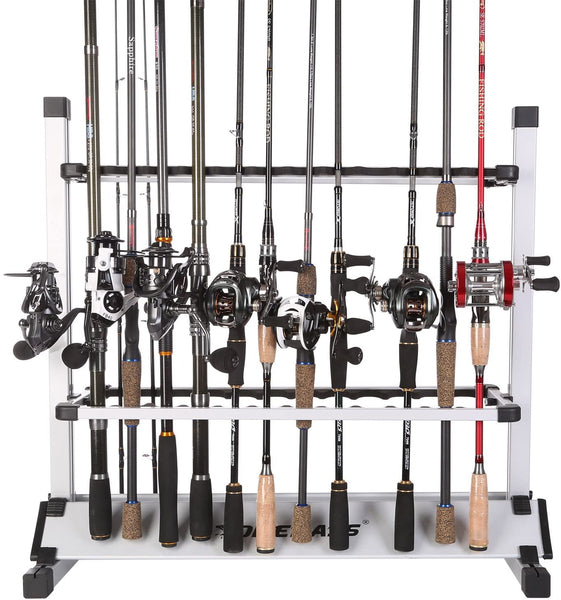
The durability and relatively low price of fiberglass rods makes them a good choice for newbie anglers. But using them doesn’t come without a price.
Because of their pliable nature, fiberglass rods provide limited feedback, and that makes lighter bites a lot harder to detect. They’re also relatively heavy, making them less than ideal if you’re fighting fish for a long time.
Graphite Rods
In use since the 1970s, graphite rods offer a lighter alternative to their fiberglass counterparts. These are deservedly popular fishing poles, but they seem to attract a lot of misconceptions. Let’s clear some of those up.
If you ever looked at a graphite rod, you probably noticed those IM6, IM7, and IM8 markers. These are identifiers for different degrees of stiffness, a.k.a. modulus. The higher the modulus, the stiffer the material. In other words, with a stiffer graphite, a manufacturer can use less material to achieve the same stiffness. What that means for you is a lighter rod.
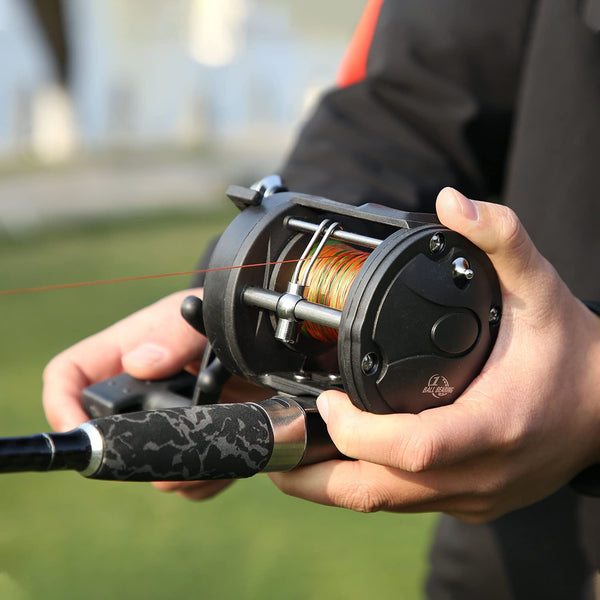
The misconception here is that an IM8 rod will be stiffer than an IM6 rod. In reality, both rods will exhibit the same stiffness, but the IM8 will be the lighter of the two.
The great thing about graphite rods is that they’re very sensitive to bites. This, along with the lighter weight, can make casting and overall handling a real joy. But it’s not all sunshine and rainbows with these rods. Because they’re stiffer, graphite rods can be a lot more brittle, too. Another drawback is the price, which is often steeper compared to a fiberglass rod of the same class.
Composite Rods
If you’re the type of angler that’s looking for performance above all else, chances are that fiberglass and graphite rods won’t cut it. This is where composite materials come in.

A mixture of graphite and fiberglass, composite fishing poles give you all the flexibility you need without adding much weight or sacrificing sensitivity. In plain English, this is how you get to handle a 100-test lb line on a 20–30 lb frame rod.
Because they’re so versatile, composite rods are a great choice if you’re used to fishing a variety of different waters. As you’d expect, composite rods are the most expensive variety out there. There’s no denying that they get the fish aboard, it’s just a matter of if the extra cost is worth it for you.
Slow, medium, or fast action?
Action is one of the key performance components of a fishing pole. Defined by the shape of the rod and its material, action dictates how much and where your rod will bend. Action also controls the speed at which the rod goes from “loaded” back to its original position. That’s where the fast, medium, and slow designations come from.

Obviously, action has a major influence on the way you handle your rod as well as what kind of fish you’ll be able to land with it. The three main rod actions you want to know are:
Fast (Heavy) Action
Fast action rods bend at the uppermost part, right below the tip. They’re sensitive to the lightest of nibbles, sending vibrations straight to your hand. Fast rods can snap back very quickly, which is ideal for powerful hook setting.
Speaking of hooks, fast action rods work well with single hooks, and worms as well as large jigs. Thanks to their fast moving tips and strong backbones, fast action rods are great for pulling fish out of heavy cover.
The strong backbone also allows you to pursue very large fish. In freshwater, a fast action rod can land you anything from a Largemouth to a Muskie. In saltwater, you’re looking at large Tuna and Billfish of all sorts – pretty much the cream of the crop.
Medium Action
Medium action rods bend in the top half of the pole. They provide good hook-setting capabilities and feedback and allow you to cast decently far. Because they move a bit slower than fast action rods, medium action rods work well with multiple-hook setups. They also give the fish more time to bite.
 That doesn’t mean that you can’t use single hooks, mind you. It’s just that medium action rods give you the added versatility. Versatility also means that you can catch fish big and small, as well as try out a number of different waters.
That doesn’t mean that you can’t use single hooks, mind you. It’s just that medium action rods give you the added versatility. Versatility also means that you can catch fish big and small, as well as try out a number of different waters.
Slow (Light) Action
On the other end of the spectrum you have the slow action rods. Bendable all the way to the butt of the rod, slow action rods make battling even the smallest critter a lot of fun. If you like fishing for Panfish or Trout, you’re gonna love these.

Slow action rods allow for truly impressive casts. That said, you really have to match your lure size to the rod when casting. A good rule of thumb to follow is to use the smallest lure that allows you a good cast.
Why small lures? Because unlike the fast-setting heavy action rods, slow action rods need time to lodge the hook inside a fish’s mouth. Treble hooks work particularly well in these situations, because their small tips require less pressure to penetrate the fish. Other fast moving lures like spinners and rattle baits are good choices, too.
The downside to slow action rods is that they are not as easy to set the hook with. Unlike fast action rods, the rod’s bend requires you to pull back farther when the fish bites. But once the hook is in, maintaining the right amount of tension on the fish is a lot easier.
What’s the right rod power?
Closely related to rod action, power is a rod’s capability to withstand pressure. As you’re probably guessing, heavier rods are good for larger fish, while lighter ones work better for smaller ones.
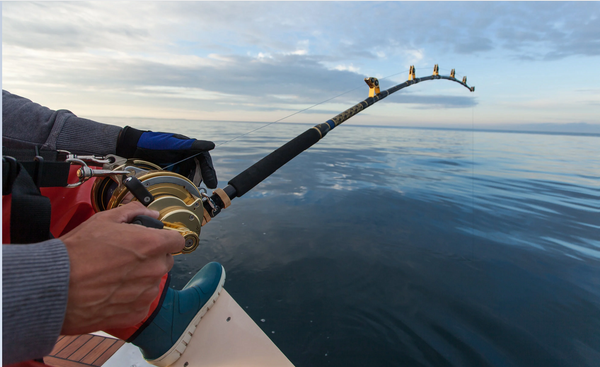 Using the same logic, you’ll want to use heavier lines with heavy rods and light lines with light rods. There’s obviously some leeway here, but you generally want to stick close to the markings written on the rod blank. Use too heavy a rod and the line might snap. Too heavy a line, and the same might happen to the rod.
Using the same logic, you’ll want to use heavier lines with heavy rods and light lines with light rods. There’s obviously some leeway here, but you generally want to stick close to the markings written on the rod blank. Use too heavy a rod and the line might snap. Too heavy a line, and the same might happen to the rod.
Rod power typically goes from Ultra Light, Light, to Medium, Medium Heavy, to Heavy and Ultra Heavy. Keep in mind that a heavy offshore rod and a heavy Bass rod are two completely different things. One might be rated for a 25 lb line and the other for a 80 lb line.
What about rod markings?
Alright, you now know what goes into choosing a fishing rod. But how do you actually know that the rod you just picked up is the type you’re looking for? Well for one, almost all fishing poles have clear markings on them. These numbers and letters will tell you all you need to know about the rod you’re looking at.
The first three or four numbers you’ll typically see are connected to the length of the rod. The type of action comes second, followed by the recommended line and lure weights. A common rod marking will look like this:
Spin MH 732 Line Wt 10-15 lb, Lure Wt ¼ – ¾ oz
What this means is that you’re looking at a medium heavy 7′ 3″ spinning rod, that can handle lines of 10–15 pounds and lures from ¼ to ¾ ounces. The number “2” after “73” signifies that this is a two-part rod.
Most manufacturers show their rod specs in this order, but not all. If you’re buying your rod in a store, you can always ask the salesman to explain what each symbol means.
Other Parts of a Fishing Rod
Most of the rod parameters we talked about are part of the rod blank, i.e. the actual stick. Those aside, there are a few other rod components you should know about before choosing a fishing rod.
Rod Guides
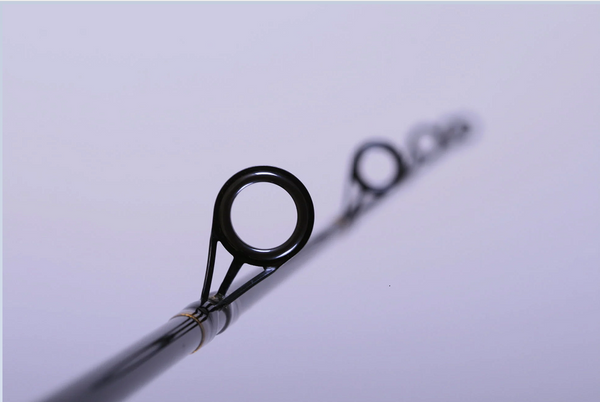
By now, you must be thinking “Do I really need to know about rod guides too?” We can’t blame you, but you’d be surprised by how much these little rings can affect the quality of your angling. There’s not a lot to them, but there are a couple of things you should know about.
Most guides are made out of metal with a ceramic coating on the inside. The coating reduces friction on the line, allowing it to move smoothly. Almost every modern fishing rod has guides with ceramic coating these days. If you happen to see one with crude metal guides, we’d advise that you avoid buying it.
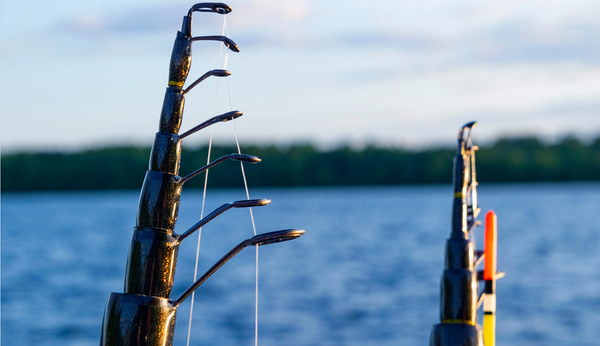
The second thing you should pay attention to is the number of guides. For example, a 7’ rod can have anywhere from 6–9 guides. As a rule of thumb, the more guides a rod has, the better. More guides will distribute stress on the line and rod more evenly, and allow you to cast with more precision. Having more guides will cost more, so it’s ultimately up to you to decide how many you want to have.
Rod Handle
The last item on our list is the one you’ll be in contact with the most, and that’s the rod handle.
Material
The rod handle comes in two basic materials, cork or EVA foam. Most anglers agree that cork is a more comfortable material, offering more cushion and warmth on a cold day. More importantly, cork is a lot more sensitive than foam, transferring vibrations up to three times as much.
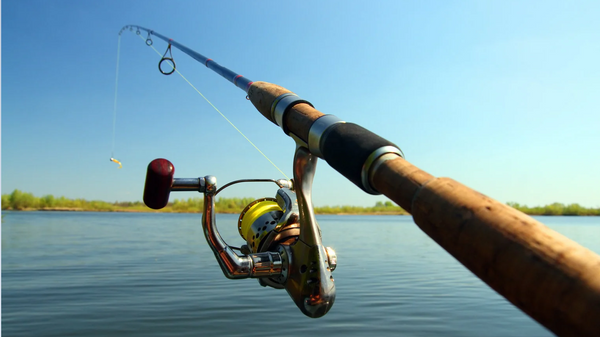
The drawback is that cork won’t last you nearly as long as foam, plus you’ll need to shell out more money for it. Cork is also harder to clean, and gets dents a lot more, especially if you’re used to keeping your rod in rod holders or leaving them on the rocks while wading.
For anglers who don’t want to stress about keeping their gear clean and tidy, foam is probably the better option.
Nowadays, you can even find carbon fiber handles which boast excellent sensitivity, but without any reliability issues. Similar to the rod blank debate, carbon fiber is a superior alternative, but it will stretch your budget a bit more.
 Shape
Shape
Rod handles come in many shapes, but two stand out as the most common. These are the pistol grip and the trigger stick. The pistol grip is a short, contoured handle with a hook for your index finger. This type of handle is great for casting accuracy and precise jigging movements.
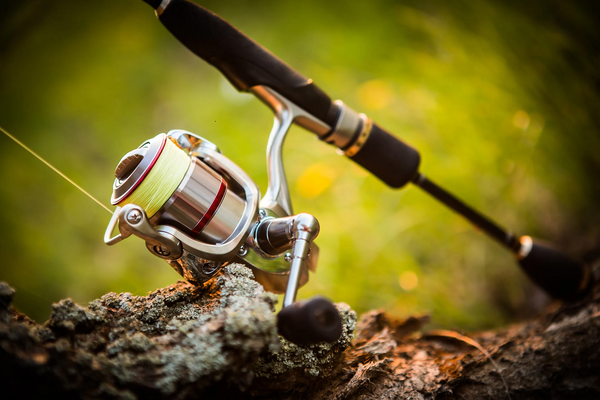 The trigger stick is a longer handle that allows you to cast with both hands. It allows you to cast much further than the pistol grip, and is generally better when battling larger species. There’s no price difference between the two, so it’s just a matter of what kind of fishing you’re into.
The trigger stick is a longer handle that allows you to cast with both hands. It allows you to cast much further than the pistol grip, and is generally better when battling larger species. There’s no price difference between the two, so it’s just a matter of what kind of fishing you’re into.
A Whole World of Options
Knowing how to choose a fishing rod doesn’t come easily. There’s a lot to consider, especially if you’re buying one for the first time. The good news is that you can avoid a lot of guesswork just by knowing what you need your rod for. As for the rest, we hope this article sorted that out.
If you’d like to go back to this guide or have it with you on the go, you can download it as an e-book here.
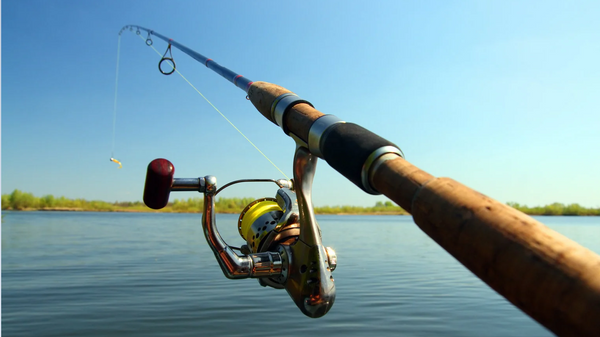 And that about covers it. Is there anything else you’d like to know about choosing a fishing rod? What are some other things you think first-time buyers should know? Share your thoughts in the comments below!
And that about covers it. Is there anything else you’d like to know about choosing a fishing rod? What are some other things you think first-time buyers should know? Share your thoughts in the comments below!


